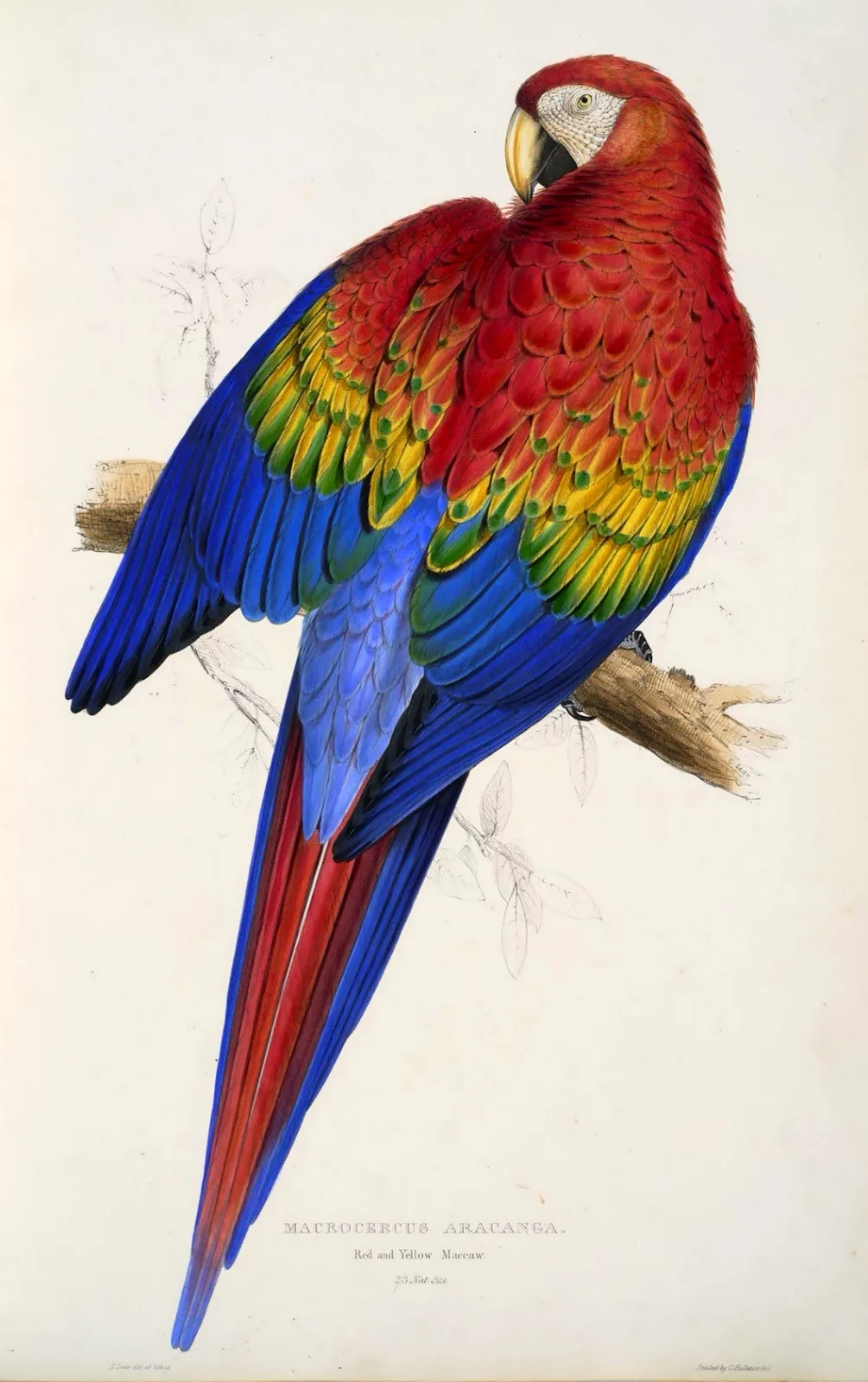The cultivation of artificially colored feathers seems to have been an old practice in the western Guianas and beyond. The Indians of the upper Orinoco utilise a frog, allied to the Rana tinctoria, the blood of which, introduced into the skin of a parrot, in places where the feathers have been plucked out, occasions the growth of frizzled feathers of a yellow or red color. Among the Uaupes River Indians, the colors of certain bird feathers were altered for the decoration of the acangatara or headdress. The feathers are entirely from the shoulders of the great red macaw; but they are not those that the bird naturally possesses, for these Indians have a curious art by which they change the colors of the feathers of many birds.
They pluck out those which they wish to paint, and inoculate the fresh wound with the milky secretion from the skin of a small frog or toad. When the feathers grow again they are of a brilliant yellow or orange color, without any mixture of blue or green, as in the natural state of the bird; and on the new plumage being again plucked out it is said always to come of the same color, without any further operation. The feathers are renewed slowly, and it requires a great number of them to make a coronet. The River Aiary (upper Rio Negro) Indians of the present day (1895) pull from the tame red macaws the green feathers at the base of the wings and smear the wounds with the fat of the pirarara fish, or of a certain toad. The new feathers become beautifully orange-yellow and retain this color, even if several times changed, as they are pulled out from time to time, for purposes of dance decorations.
On the Inirida, a branch of the Guaviare (upper Orinoco), the Puinabo tribe possess the secret of coloring parrots yellow. They make them eat the fat of cajaro, a fish very common in the Guaviare, which fat is yellow. The parrot’s feathers first become spotted with yellow, and end by taking this color entirely. The Pomeroon Indians at the present time maintain that certain of the green parrots, if fed with yolk of egg, will change their feathers to a yellow color.
Smithsonian Institution. Bureau of American Ethnology. ‘Annual report of the Bureau of American Ethnology to the Secretary of the Smithsonian Institution.’ Washington : U. S. Govt. Print. Off., 1895.

